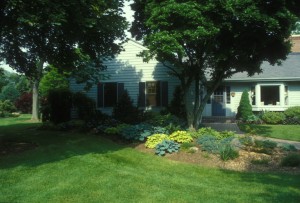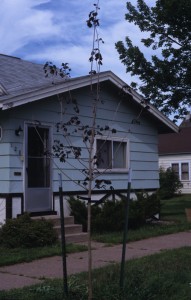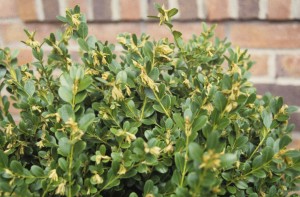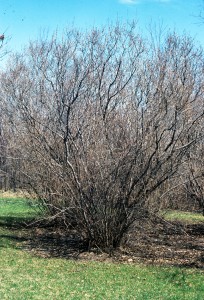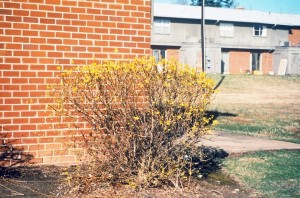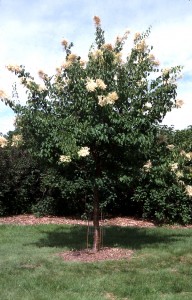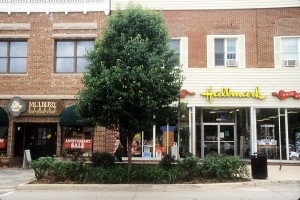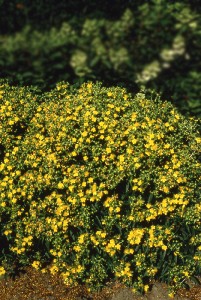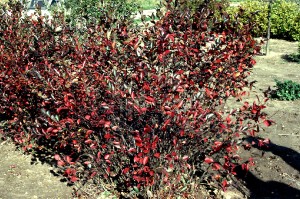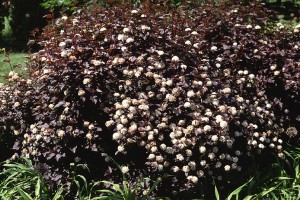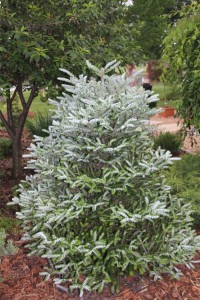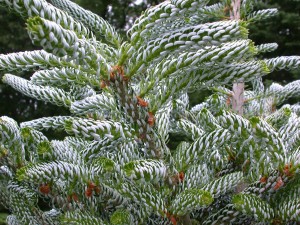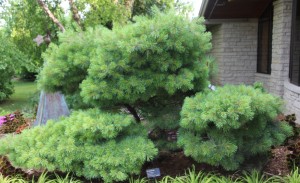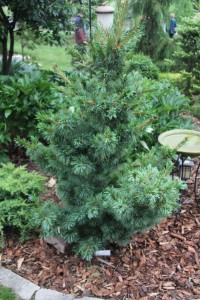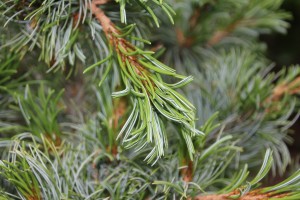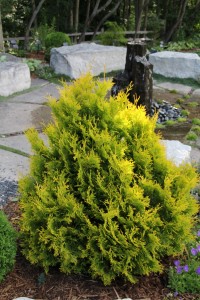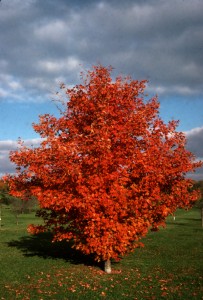
As promised in my Sept. 9 post of “The Science Behind Fall Color”, I would address trees and shrubs with outstanding fall color. It was hard limiting it to only ten trees and ten shrubs, since I found 5 common shrub species of maples alone, so I cheated a bit and grouped the maples, oaks, etc. into one group so that my list was not entirely all maples.
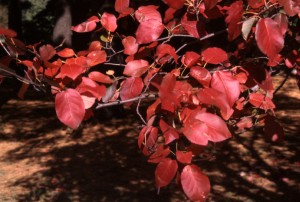
I have seen the below plants with reliable fall color in northern, southern and eastern landscapes. These plants “light” up the landscape in autumn. For outstanding, long lasting autumn color, plant the below trees and shrubs with herbaceous plants which bloom in fall such as asters, mums, sedums, monkshood, toad lilies, and Japanese anemones. Do not forget ornamental grasses with their showy seed heads extending the season of color and texture.
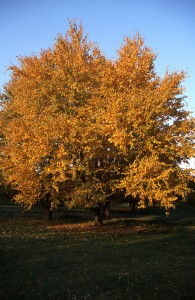
We used to recommend ash for fall color, but not any more due to emerald ash borer. Japanese barberry and burningbush are tops for fall color, but both species are highly invasive and not recommended. There are more plants with great fall color than the ones below. I would love to hear your favorites!
Top 10 Trees for Fall Color
1) Black gum, sour gum, tupelo (Nyssa sylvatica), orange-red, scarlet to purple, outstanding
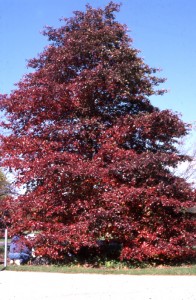
2) Maples, especially:
Sugar maple (Acer saccharum), bright yellow to orange-red
Red maple (A. rubrum), yellow, orange-red to bright red
Freeman maple (A. × freemanii), yellow, orange-red, red to reddish-purple
Paperbark maple (A. griseum), dark red to bronze
Japanese maple (A. palmatum), orange, red to purplish-red
Korean maple (A. pseudosieboldianum), deep orange to reddish-purple
Three-flower maple (A. triflorum), orange
Full moon maple (A. japonicum), yellow-orange to scarlet-red
Moosewood, striped-bark maple (A. pensylvanicum), bright yellow
3) Ginkgo (Ginkgo biloba), bright golden-yellow
4) Thornless honeylocust (Gleditsia triacanthos f. inermis), bright golden-yellow
5) Quaking aspen, trembling aspen (Populus tremuloides), bright yellow
6) Oaks, especially:
White oak (Quercus alba), dark red to wine
Red oak (Q. rubra), red to russet
Scarlet oak (Q. coccinea), red to scarlet
Black oak (Q. velutina), dark red
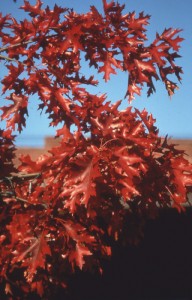
7) Apple serviceberry (Amelanchier × grandiflora), yellowish-orange to red
8) Buckeyes, especially:
Yellow buckeye (Aesculus flava), golden-yellow to orange
‘Autumn Splendor’ buckeye (A. × arnoldiana ‘Autumn Splendor’), deep, burgundy-red
‘Homestead’ buckeye (A. × marylandica ‘Homestead’), orange-red
9) Birch, especially:
Yellow birch (Betula alleghaniensis), bright yellow
Sweet birch, cherry birch (B. lenta), bright yellow
Paper birch, canoe birch (B. papyrifera), yellow
10) Yellowwood (Cladrastis kentukea), bright yellow to gold
Top 10 Shrubs for Fall Color
1) Large and dwarf fothergilla (Fothergilla major and F. gardenia), yellow-orange to red, outstanding
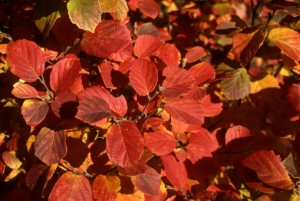
2) Common and vernal witchhazels (Hamamelis virginiana and H. vernalis), bright yellow to golden-yellow
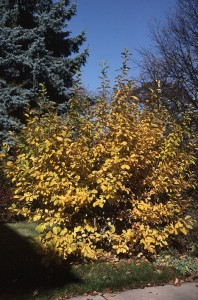
3) Virginia sweetspire (Itea virginica), dark reddish-purple
4) Black and red chokeberries (Aronia melanocarpa and A. arbutifolia), red-orange, wine-red to purple

5) Sumacs, especially:
Shining sumac, winged sumac (Rhus copallinum), bright red to scarlet
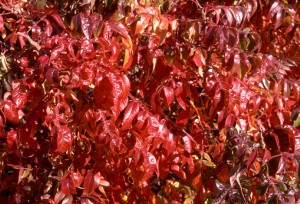
Staghorn sumac (R. typhina), orange to scarlet
Smooth sumac (R. glabra), orange to scarlet-purple
Fragrant sumac (R. aromatica), orange, red to purple
6) Oakleaf hydrangea (Hydrangea quercifolia), reddish-orange to wine
7) ‘Tor’ birchleaf spirea (Spiraea betulifolia ‘Tor’), orange to reddish-purple
8) Viburnums, especially:
Withe-rod viburnum (Viburnum cassinoides), orange-red, crimson to purple
Blackhaw viburnum (V. prunifolium), reddish-purple
Arrowwood viburnum (V. dentatum), depends on cultivar, yellow, red to purple
American cranberrybush viburnum (V. opulus var. americanum, formerly V. trilobum), yellow to reddish-purple
Doublefile viburnum (V. plicatum f. tomentosum), wine-red
‘Wavecrest’ Siebold viburnum (V. sieboldii ‘Wavecrest’), red to burgundy
9) Cranberry cotoneaster (Cotoneaster apiculatus), deep reddish-purple
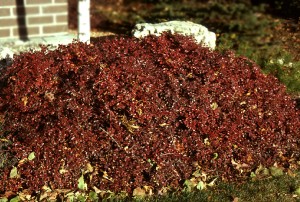
10) Virginia rose (Rosa virginiana), deep reddish-purple
Laura Jull, Ph.D.
a.k.a.: The “Lorax”




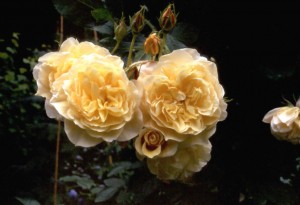
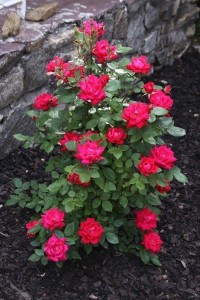
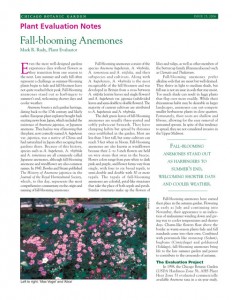
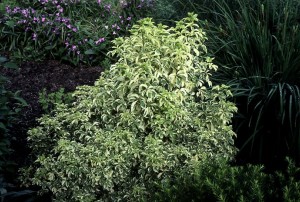
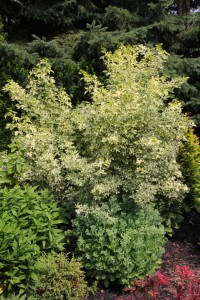

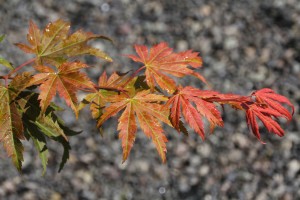

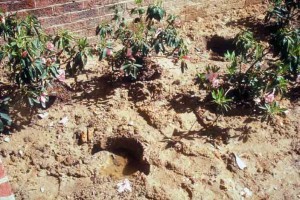
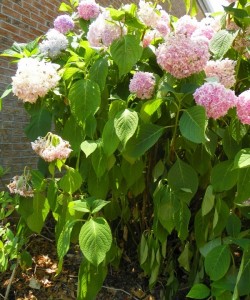

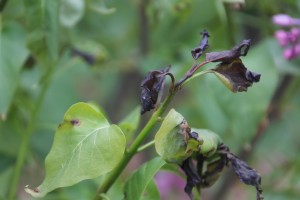
![Oystershell scale on 'Redwine' lilac [Syringa (Villosae Group) 'Redwine']](https://gardenprofessors.com/wp-content/uploads/2015/07/Scale-on-Syringa-Villosae-Group-Redwine3-copy-200x300.jpg)


